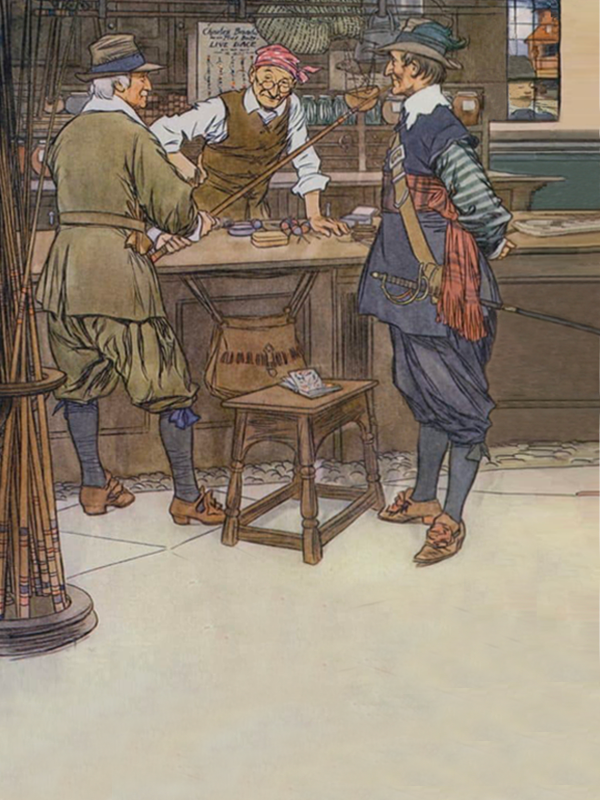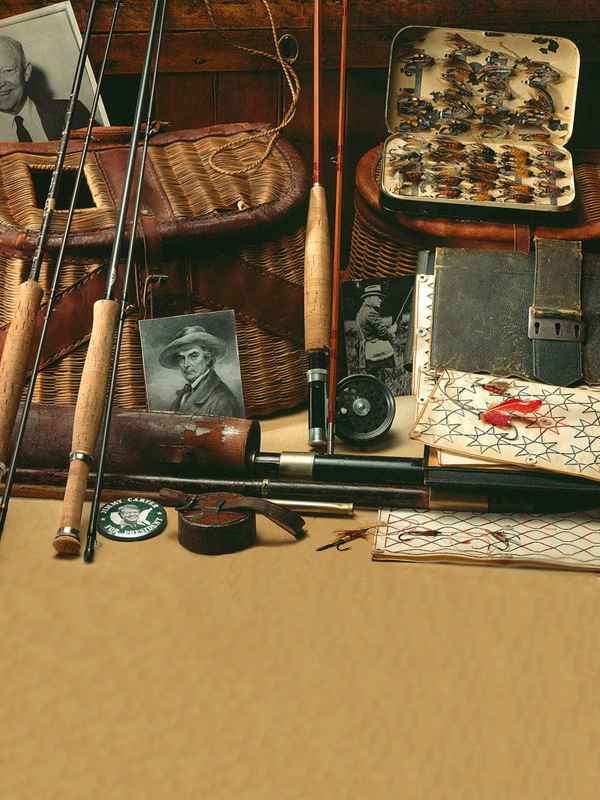
Fishing in the Middle Ages
Fishing in the Middle Ages

In the entire history of the Middle Ages, we do not find among the numerous monastic manuscripts of the period, any real reference to recreational or contemplative fishing. The literature in French is very poor here. Except for the Roman de Renart where Goupil makes Ysengrin fish through the ice with his tail.
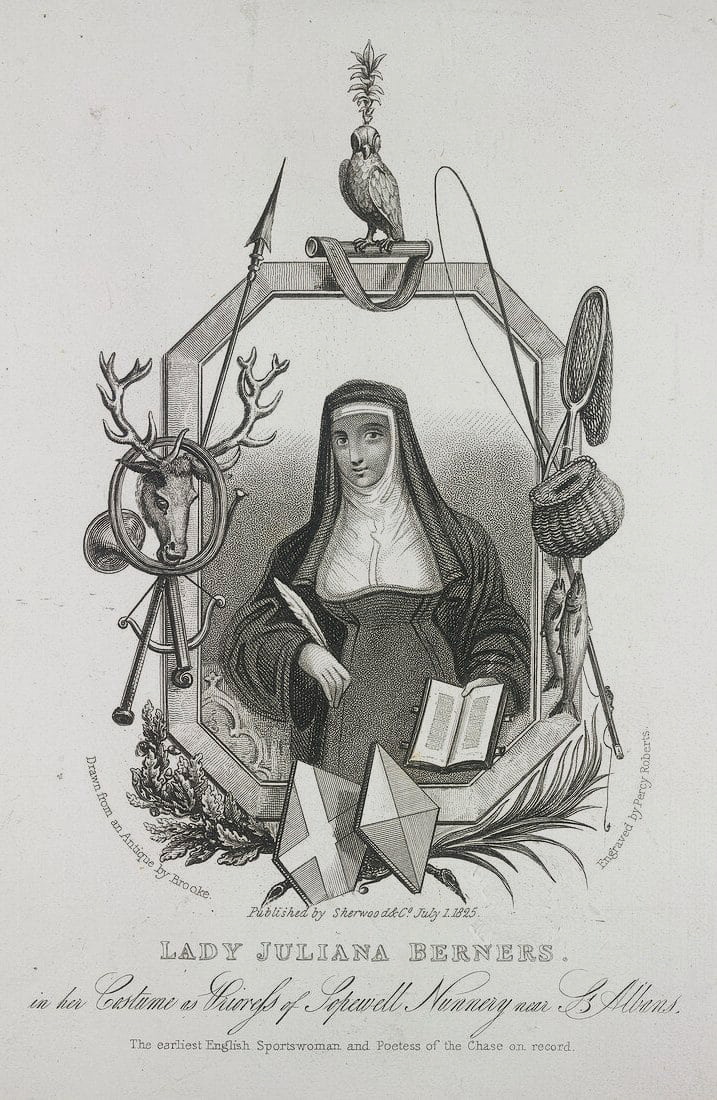
Dame Juliana Berners, author of the treaty: Treatyse of Fisshynge wyth an Angle
After the fall of the Roman Empire and throughout the Middle Ages, we know little about fishing in general and angling in particular, but it does not seem that the techniques used at the time of the Greeks and Romans have evolved or even improved. Only hunting, with hounds or falcons, seems to have been a passion for several centuries, in France, as in all of medieval Europe, for kings and lords. It was not until the end of the Middle Ages that the Treatyse of Fisshynge wyth an Angle was printed in Westminster in 1496, attributed to Dame Julyana Berners (or Juliana Barnes), daughter of a councillor of King Richard II, and later Mother Superior of the Priory of the Benedictine Convent of Sopwell, an annex of Saint Alban’s Abbey in Hertforshire. Let us not hesitate to say that this treatise appears to us to be as important for the sport angler as the Bible can be for a Christian or the Koran for a Muslim. This treatise had at least ten other editions before 1600, which shows its great popularity. It begins with an eloquent plea in the form of a preface, on the benefits of angling, compared to other country amusements such as hunting with hounds, hawking or trapping. The preface reads: “Among the following four sports: hunting, falconry, trapping, fishing and more particularly angling, that is to say, with a hook, which will be the one that will allow us to achieve our ends? Hunting, in my opinion, is too tedious. The hunter has to walk painfully all day and follow his hounds, all this with a lot of sweat. Falconry seems to be just as tedious and painful. The falconer screams and hisses until his throat is parched when his falcon perches. In my opinion, trapping is the poorest form of entertainment. The proof is in the pudding: hunting, falconry and trapping are so tedious and uninteresting that none of them will train a man in the spirit of Solomon’s proverbs which promise him a long life. The angler, on the other hand, will not experience any of these inconveniences. At most he will lose his line or his hook; the misfortune will not be irreparable for all that, since he will always be able to make them again, as well as the other utensils, as I hope this treatise will teach you.“
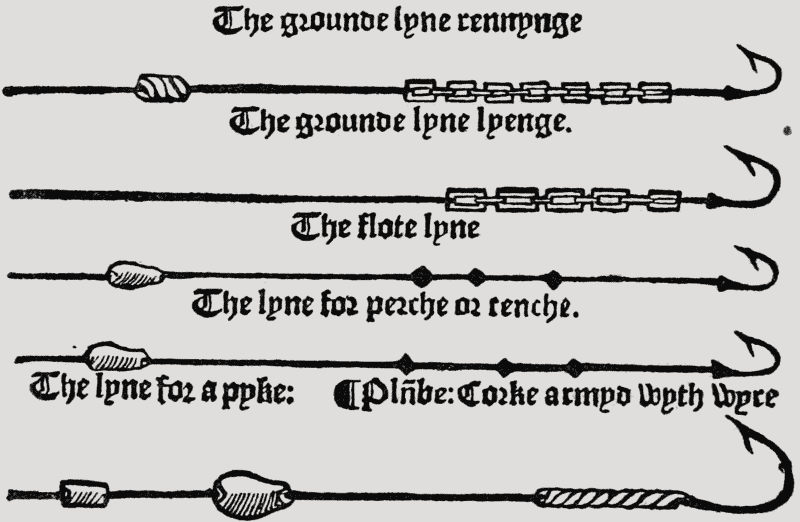
In the "Treatyse..." dating from 1496, a very explicit diagram, shows the different ways to lead the lines, depending on the different species of fish sought.
The first, Dame Julyana, affirms the contemplative character of angling.
This text, printed more than half a millennium ago, has lost none of its freshness and spontaneity. What is astonishing for the time, is the affirmation of the recreational, contemplative and relaxing (we would say today de-stressing) side of angling. Catching fish is not seen as the sole or primary purpose of angling. And above all, Dame Julyana Berners tells us, if the angler catches fish, there will be no happier man than he.
The most important part of the treatise, gives for each species of fish of the British Isles, the indications on the material, the baits, the places, the seasons, the particularities and the best techniques to use, in order not to come back empty-handed. The innumerable fishing treaties that followed that of Dame Julyana Berners, have essentially taken up this plan and its developments.
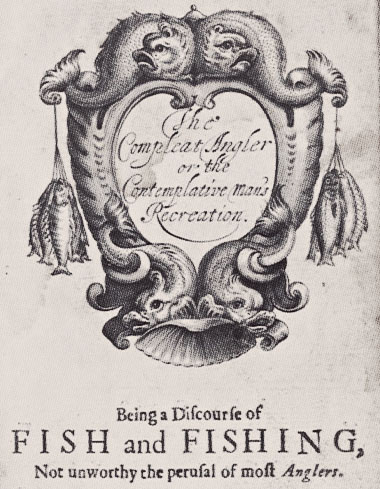
The famous "Compleat Angler" remains today, with more than three hundred and fifty reprints, the book with the greatest number of times published after the Holy Bible.
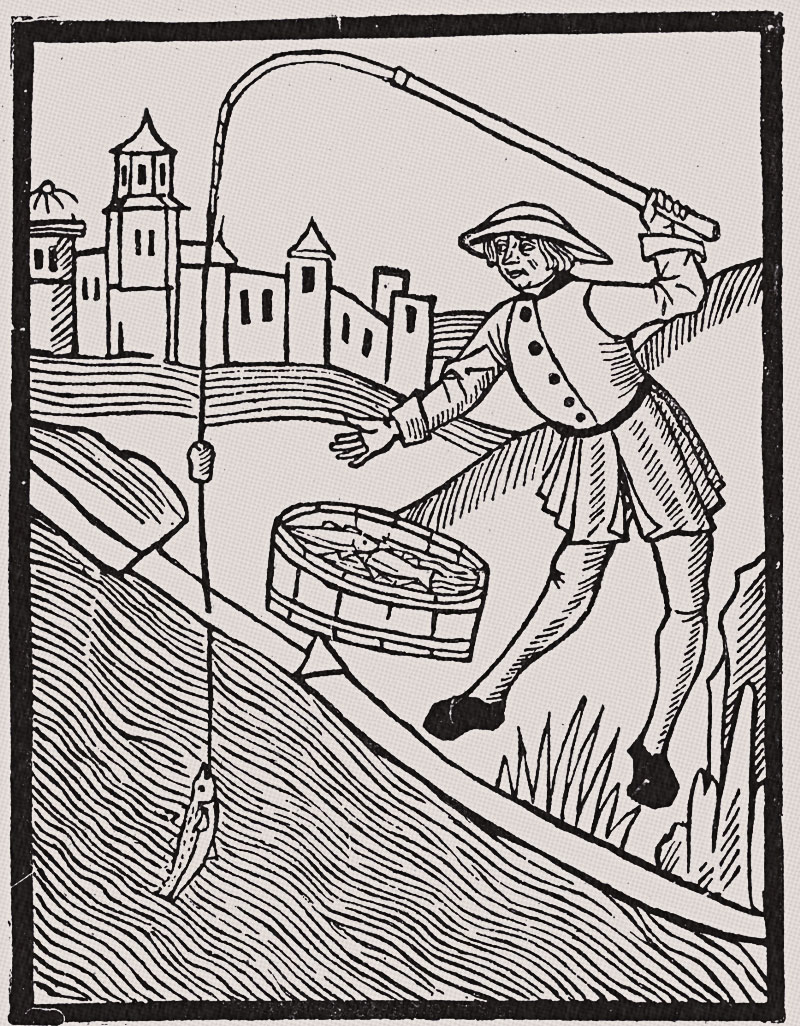
In front of a castle, a nobleman, easily recognizable by his dress, is angling for spotted fish that appear to be trout, in a recreational manner.
The most famous of these, Isaac Walton’s famous “Compleat Angler”, first published in 1653 and which remains today, with more than three hundred and fifty reprints, the most widely published book after the Holy Bible, owes a great deal to the Treaty of Lady Julyana. Walton embroidered, while adding his own experience, on the framework offered to him by the “Treatyse of Fisshyng wyth an Angle”. His selection of artificial flies copies word for word the list of 1496, it is the same for the baits, pastes and primers.


